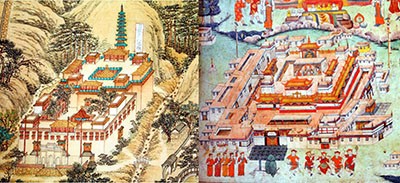
Research On Qing Dynasty Imperial Tibetan-Style Architecture In Three Capital Cities History, Case Study And Related Events
Dr. Yang Jing
Der Fachbereich Baugeschichte::Bauforschung der Technischen Universität Wien und das IVA Institut für Vergleichende Architekturforschung laden Sie im Zuge der Vortragsreihe ZEITRÄUME herzlich zu folgenden Veranstaltungen ein:
Zeit: 13.11.2014, 19:00 Uhr
Ort: Technische Universität Wien; Hörsaal 7 – Schütte-Lihotzky Hörsaal, Stiege VII, Erdgeschoß; Karlsplatz 13, 1040 Wien
Based on the Qing official structural carpentry, extensively fused with Tibetan architectural elements, Qing Dynasty imperial Tibetan-style architecture is a typical Chinese traditional architecture, refers to the buildings that oversaw by Qing government, and showed a distinct national identity. This type of architecture is reflected a national level multi-cultural communication, depicted the characteristic of wide geographical distribution, excellence art and profound religious and political implications. The lecture intends to study such buildings in three capital cities, Mukden, Jehol and Peking, includes three topics: firstly, the history of Qing Dynasty Imperial Tibetan-style Architecture, from Early Qing to High Qing; secondly, typical case study and comparative between imperial “flat roof and blockhouse style” and Tibetan prototypes, especially a contrast between Zhaomiao Temple in Peking and Jokhang Temple in Lhasa; thirdly, three audiences between Fifth Dalai Lama, Sixth Panchen Lama, Thirteenth Dalai Lama and Qing emperors, and the related Tibetan-style architectures of the events.

